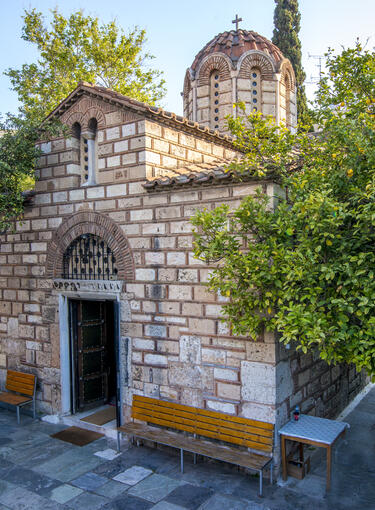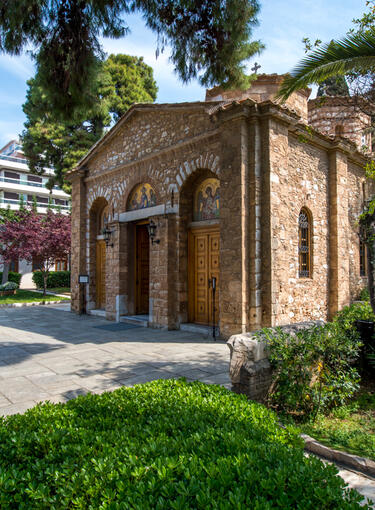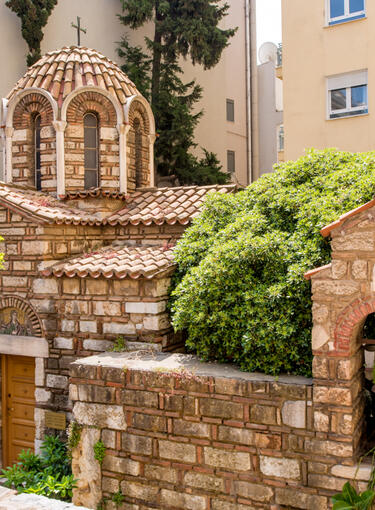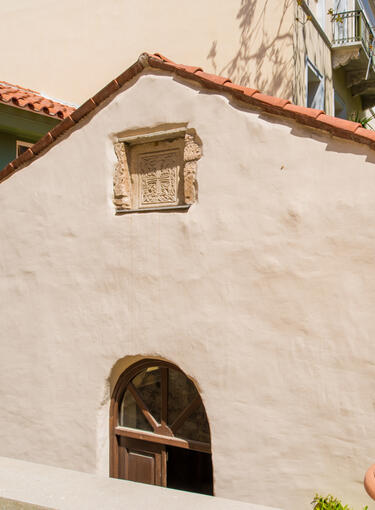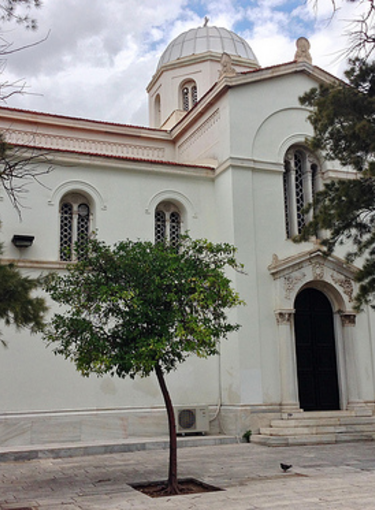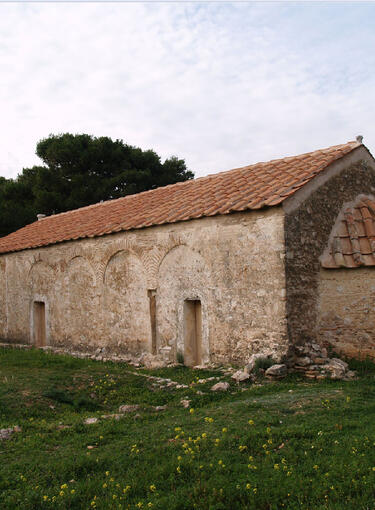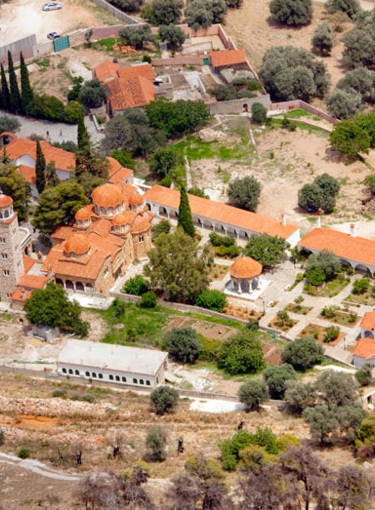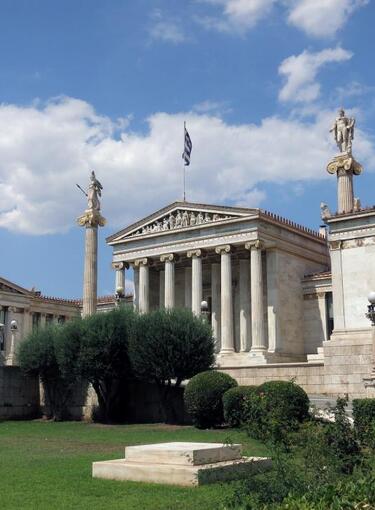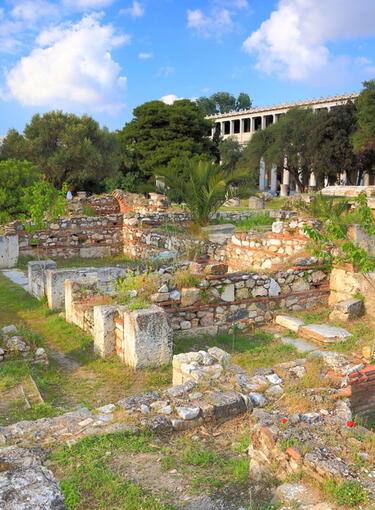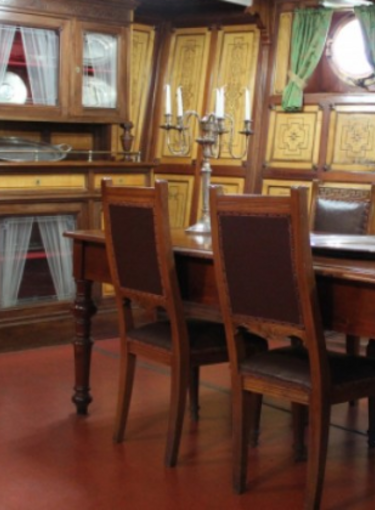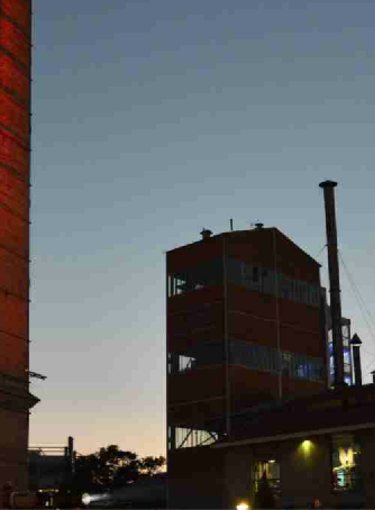Historic Temples
At the entry point of Metaxourgio, down Koumoundourou Square, stands as an indelible memory of Athens of another era the chapel of Saint George. In an area where the neoclassical idiom of the city bowed down to the shapeless and massive buildings of the modern era, some tall-and-thin palm trees still resist delineating the site where this small church graces the now bustling Pireos Avenue.
It is with difficulty that the current visitor of the church can imagine now the composition from which Saith George emerged, when, that is, it supplemented the complex of the Hatzikonstas Orphanage adorning its internal enclosure.
According to photographs preserved, the drawings of the once majestic building belong to Ernest Ziller. With components referring to the Renaissance style, a feature of the complex was the enclosed courtyard, of Florentine influence, in which the church was constructed in 1899 – 1901, a donation by Eleni Dimitriou, the wife of the grandson of Hatzikonstas.
The style of the church of Saint George did not abide by the Italian Renaissance despite the fact that the latter was the main source of inspiration for the style of the complex. Conversely, Ziller selected to attribute to the church a style of Romanesque architectural order with the Athenian atmosphere to some degree smoothening the strictness of the lines imposed by the western Middle Ages. We have, according to Biris, the application of a Neoromanism with the parallel use of individual elements of neogothic character but also some eclectic allusions. The Church is two–columned and cross-formed, with the large dome constituting the dominant component. A feature of the church but also of the corresponding architectural order, the bastion-type turrets and the imposing force arising from the walls with dressed stone. The impressive dome, at its external side, is adorned by a decorative festoon, while the four-light and triple-light windows, the pointed gables and pediments reflect Ziller’s effort to initiate to Athens a Christian church of a new style.
The interior decoration of the church was designed, originally, by Ziller himself. In fact, his drawings are kept at the National Gallery but, eventually, the sole drawing which remained true to its inspirator is the one of the dome, the latter in fact being executed by Athanasios Kadris, some decades following the construction of Saint George.
In our days, in the conch is depicted the Virgin Mary Platytera of neo-Byzantine style, the Pantocrator adorns the depth of the imposing dome and on the pendentives of the dome the four Evangelists are depicted. The current wooden carved templon is also neo-Byzantine as also the icons adorning it.
The visitor will discover the older icons of the first years of operation of the church on the walls of the transept nave. These are works of Western style and, unfortunately, of an unknown author. At the northern nave there are to be found the Virgin and Child (western wall) and Saint George (eastern wall) and at the southern nave Jesus Christ (eastern wall) and Saint John the Baptist (western wall). Among the icons crafted in 1901 are also the one of the Saint George the New Martyr, the work of an unknown icon painter, with features referring to works by Sotirios Kartesios.


















